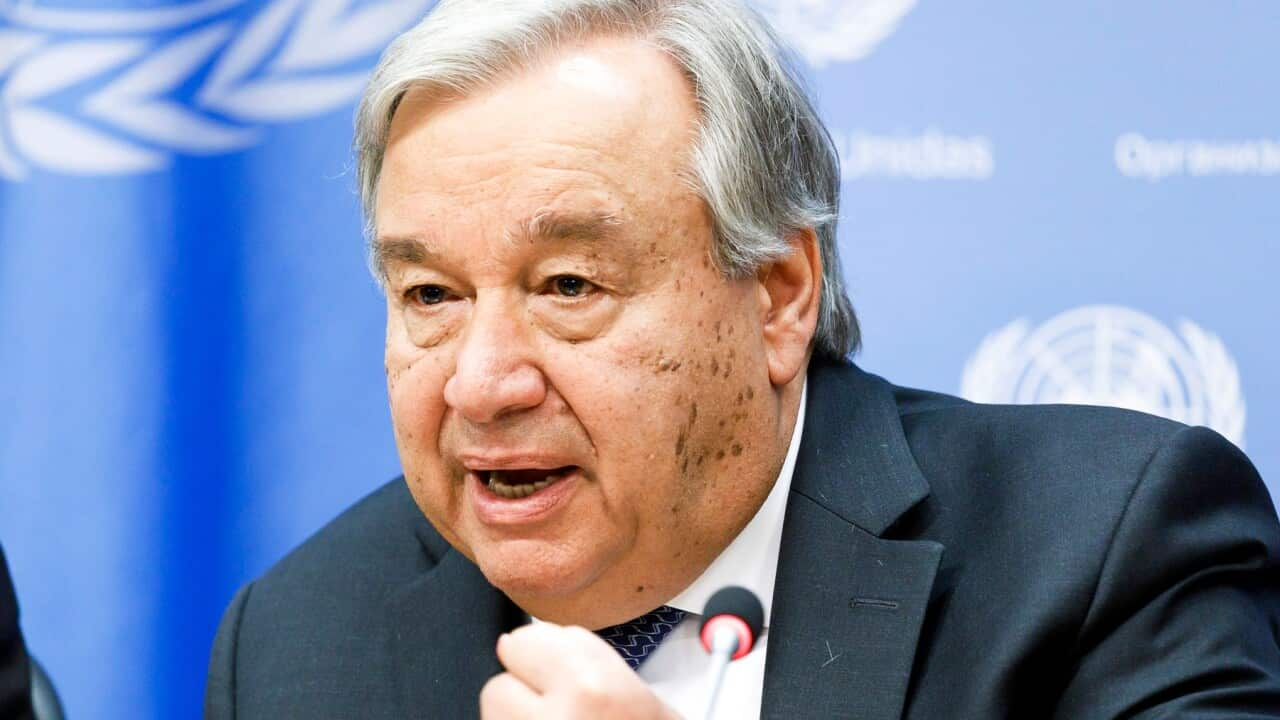A decision by the Morrison government to pour millions more into gas infrastructure has prompted analysts to question if the approach fits with its net zero ambitions.
Energy Minister Angus Taylor has announced another $50.3 million towards seven priority gas projects, as well as prospective carbon capture and storage sites.
The Morrison government has emphasised the need for the projects to stop power prices rising and shore up the renewable energy in the electricity grid.
The response also comes with the invasion of Ukraine leading to rapid rises in the prices of fossil fuels such as coal, oil and gas across Europe.
But Alison Reeve, deputy director of the Energy and Climate Change program at the Grattan Institute, said it was “difficult” to justify pumping more money into the sector.
“Widespread gas use in the Australian economy is not compatible with a net zero goal,” she told SBS News.
“Increasing the supply of gas at a time when we are trying to push emissions down towards zero is counterproductive.”
The funding commitment continues the federal government's pursuit of a controversial plan for a “gas-fired recovery” from the COVID-19 pandemic.
Mr Taylor said the government was accelerating the priority projects to prevent the “devastating impacts” of a gas supply shortfall in Australia, as recently seen in Europe.
Russian gas accounts for around 32 per cent of total European and UK gas consumption, according to government figures.
Mr Taylor said Russia’s invasion of Ukraine had created an unacceptable risk to global gas security.
“Our investment will help keep the lights on and homes heated in southern Australia, and support our industries and businesses to keep operating,” Mr Taylor said.
The federal government is working with industry to finalise agreements to expand pipelines in Queensland, NSW and Victoria.
It would also conduct feasibility studies for pipelines to carry carbon dioxide from industrial hubs to the Cooper, Surat and Beetaloo gas basins.
Mr Taylor has pointed to a warning from the Australian Competition and Consumer Commission about gas supply shortages hitting this year in the southern states as evidence of need.
The Australian Energy Market Operator has also issued a warning about gas supply “scarcity risks” in the southern states.
But Professor Mark Howden of the ANU Climate Change Institute said Australia’s emphasis on a gas-fired recovery was “very hard to reconcile” with its net zero commitment by 2050.
“It's not necessarily a waste of money, but there's a question about what the alternatives are,” he told SBS News.
“Increasing our reliance on gas and gas exports will just simply drive up our domestic emissions.
“Clearly the future of the world we're looking at is in renewables and whether that money could be spent better in investing in renewables.”
The government’s net zero plan, unveiled last October, states that according to modelling forecasts there will still be some coal and a “significant proportion” of gas in the electricity grid by 2050.
In the 2021-22 budget, the government also announced $38.7 million over two years to support gas infrastructure projects as part of its COVID recovery.
UN general secretary rebukes Australia
The gas commitments also come as UN Secretary General Antonio Guterres singled out Australia as one of the G20 nations ‘holding out’ from setting a more ambitious 2030 reduction target.
Mr Guterres also said it would be “madness” for countries to turn to fossil fuels because of the Ukraine war.
But Communications Minister Paul Fletcher has strongly refuted the assessment of Australia’s response to climate change.
“The chattering classes of the UN can say what they want. The facts are our emissions are 20 per cent down from 2005,” he told the ABC.
“Our technology not taxes plan will get Australia to net zero by 2050.”
Australia has officially committed to reduce emissions 26 to 28 per cent by 2030 based on 2005 levels, but has projected emissions are forecast to fall by up to 35 per cent by then.
In a landmark report last year, the International Energy Agency also warned no new coal plants or oil and gas fields could be developed if the world was to achieve the Paris Agreement’s goal of preventing a global temperature rise to 1.5 degrees.





